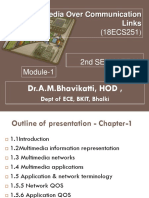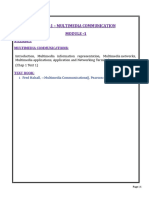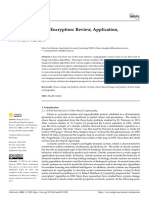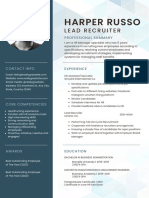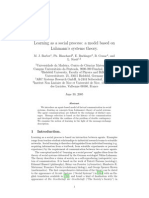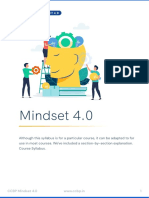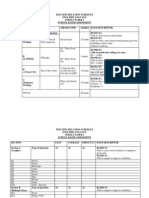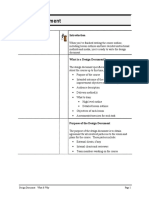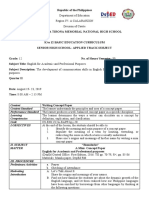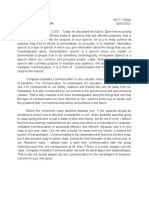0% found this document useful (0 votes)
38 views66 pagesMultimedia Networks for Students
This course aims to provide students with fundamental knowledge of multimedia networks and applications. The course objectives are to understand digitization techniques for different media types like text, images, audio and video. It also aims to analyze compression techniques for efficiently transmitting multimedia content across different networks. After completing the course, students will be able to explain basic multimedia concepts, describe digitization principles, interpret compression techniques, and apply multimedia communication knowledge across networks.
Uploaded by
KIRAN ECECopyright
© © All Rights Reserved
We take content rights seriously. If you suspect this is your content, claim it here.
Available Formats
Download as PDF, TXT or read online on Scribd
0% found this document useful (0 votes)
38 views66 pagesMultimedia Networks for Students
This course aims to provide students with fundamental knowledge of multimedia networks and applications. The course objectives are to understand digitization techniques for different media types like text, images, audio and video. It also aims to analyze compression techniques for efficiently transmitting multimedia content across different networks. After completing the course, students will be able to explain basic multimedia concepts, describe digitization principles, interpret compression techniques, and apply multimedia communication knowledge across networks.
Uploaded by
KIRAN ECECopyright
© © All Rights Reserved
We take content rights seriously. If you suspect this is your content, claim it here.
Available Formats
Download as PDF, TXT or read online on Scribd
/ 66




































